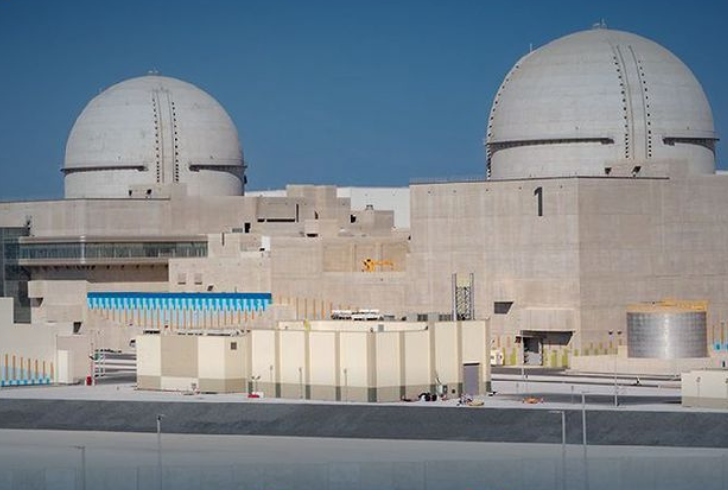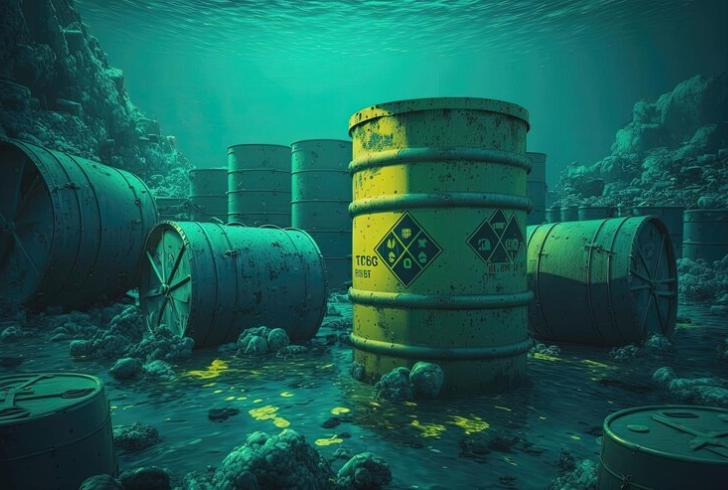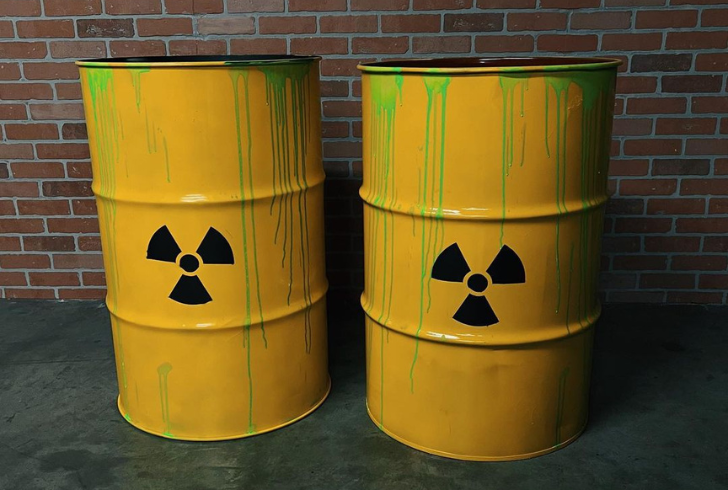For decades, the Pacific Ocean shimmered, seemingly untouched by the shadows of the human footprint. But beneath its turquoise surface, a chilling reality lies hidden – a legacy of environmental carelessness, a silent specter haunting the marine ecosystem. A recent report by the Los Angeles Times has unveiled a truth far more unsettling than previously imagined: the presence of radioactive waste, potentially posing an unseen threat to the ocean’s delicate balance.
What was initially believed to be a mass of discarded DDT barrels, a notorious pesticide, now reveals a different, graver story. Researchers suspect these barrels hold low-level radioactive waste, disposed of by hospitals, laboratories, and industries during the mid-20th century. This revelation adds a new layer to the existing concern about DDT pollution, raising questions about the long-term consequences of such irresponsible practices.

The sheer scale of this radioactive graveyard is staggering. Estimates suggest over 56,000 barrels were dumped into the Pacific Ocean near the Californian coast alone, a period spanning from the 1940s to the 1960s. These barrels now rest in their watery tombs, thousands of feet deep near Catalina Island, a stark reminder of our disregard for the ocean’s sanctity.
As Ken Buesseler, a marine radiochemist, aptly states, “The problem with the oceans as a dumping solution is once it’s there, you can’t go back and get it.” These barrels, along with the potential harm they harbor, are there to stay, a constant reminder of the past’s mistakes.
What Lies Beneath the Surface?
While the exact nature and extent of the radioactive material within these barrels remain unknown, the potential risks are undeniable. Radioactive elements can leak into the surrounding water, contaminating marine life and impacting the entire food chain. This could have devastating consequences for the delicate ecosystems that thrive in the ocean, potentially disrupting entire populations and jeopardizing the health of marine species we rely on for food and recreation.

Furthermore, the long-term effects of such radioactive contamination on human health are also a cause for concern. Ocean currents can carry these contaminants over vast distances, potentially reaching areas where people consume seafood or engage in recreational activities. While the immediate risks might be low, the potential for long-term health issues cannot be ignored.
A Legacy of the Past, a Challenge for the Future
The discovery of radioactive waste off the Californian coast serves as a stark reminder of the environmental consequences of our actions. It is a sobering call to action, urging us to acknowledge the mistakes of the past and work towards a future where our oceans are treated with respect and responsibility.
This situation necessitates a multipronged approach. Further research is crucial to understand the extent and nature of the radioactive contamination, assess the potential risks, and develop strategies for mitigation. Additionally, stricter regulations and enforcement mechanisms are needed to prevent future dumping of hazardous materials into our oceans.
Most importantly, this serves as a crucial lesson for future generations. The ocean is not an infinite dumping ground; it is a vital part of our planet’s ecosystem, deserving of our care and protection. By learning from the mistakes of the past, we can chart a course towards a future where our oceans thrive, free from the shadows of pollution and negligence.
Beyond the Headlines: A Call to Action

The news of radioactive waste off the Californian coast is not just a local concern; it is a global issue with far-reaching implications. It highlights the need for a collective effort to protect our oceans, not just from past mistakes but also from future threats.
We, as individuals and as a global community, must take responsibility for the health of our planet. We can do this by supporting organizations working to clean up our oceans, advocating for stricter environmental regulations, and making conscious choices in our everyday lives to reduce our environmental impact.
Let the discovery of radioactive waste serve as a wake-up call. Let it be a catalyst for change, inspiring us to create a future where our oceans are teeming with life, free from the scars of human negligence. The time for action is now, and the future of our oceans depends on it.




